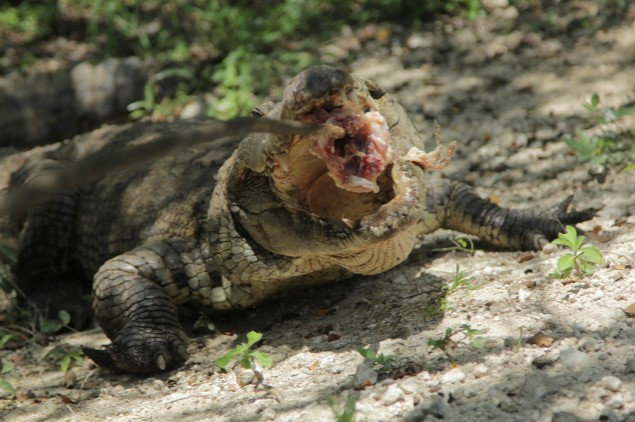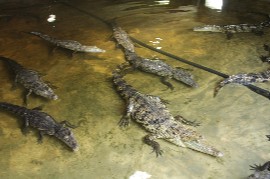RÍO LAGARTOS — Goliat and Tomasita live near Rio Lagartos, a town in the state of Yucatan whose surrounding wetlands are so well preserved and diverse in terms of flora and fauna that they have been designated a biosphere reserve by UNESCO.
Both are well cared for, fed several kilos of chicken meat every week – among other culinary treats – and live with 358 other members of their species.
They are the only two named crocodiles at the Itzamkanac Cooperative, which was established four years ago with the goal of selling the animals’ skin, meat, oil and skeletons, said its treasurer, Elmy Marfil Marrufo.
Participants in this year’s BBVA Route, a Spanish government youth program aimed at promoting cultural exchanges among Ibero-American countries, including Brazil and Portugal, visited the cooperative, one of Mexico’s wildlife management units, or UMAs, on Friday July 1.
During their visit, part of a tour of Yucatan’s Mayan jungles through July 15, they learned about the life and habits of these reptiles and even fed and held one of the animals.
Neither Marfil nor any of her nine colleagues at the cooperative earns a salary for their work feeding, cleaning and caring for the animals and their surroundings or accompanying domestic and international visitors to the crocodile farm.
These workers, who volunteer full-time at the cooperative and help each other out when they run into economic difficulties, hope to recover their investment in time and money when the crocodiles are big enough — around 1.45 meters long and 30-35 centimeters wide – – to be harvested.
A crocodile’s skin can sell for $500 USD, while its meat can be worth as much as 400-500 pesos ($22-25 USD) per kilo (one animal can weigh as much as fifty kilos), but Marfil said she could not venture to guess how much a skeleton might fetch.
The project began four years ago with 30 crocodiles (25 females and five males), but the number of animals has since grown to 360 and 250 more are expected to be born this year.
Marfil said the goal was to “reach 1,000 animals annually within six years.”
Source: http://latino.foxnews.com/l





